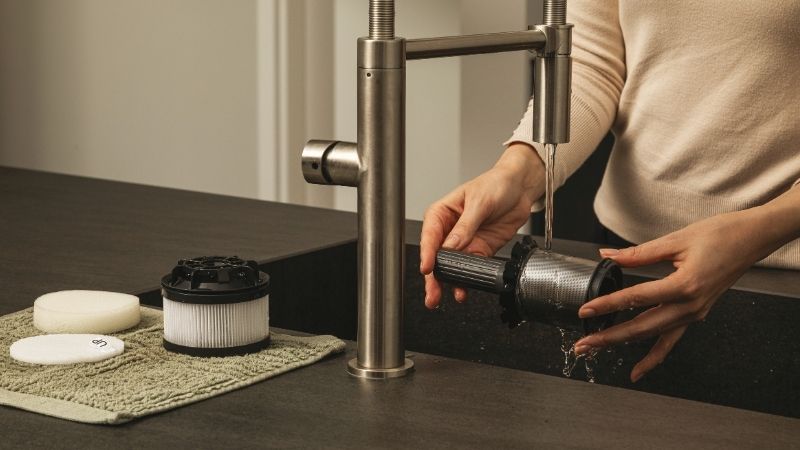Although there is no hard and fast rule of how often you should hoover, frequent vacuuming is key to maintaining a healthy living environment free of dirt, dust and other allergens. Floors are not the only places that need to be vacuumed as cushions and window sills and skirting boards tend to collect just as much dust. Frequent vacuuming prevents dirt and dust getting trapped and trodden into your floors which is especially important for households with pets or children crawling and spending more time on the floor.
So, how often should you Hoover? This largely depends on the layout of your home, the amount of foot traffic and types of flooring. Rooms with more foot traffic such as the kitchen, and living room should be vacuumed at least twice a week while offices and bedrooms can be vacuumed once a week. To get a better idea of how to make your own vacuum schedule, let's take a look at some common flooring materials and how often Hoover recommends vacuuming them.
How often should you vacuum wood floors?
Hard floors like wood, synthetic wood and laminate should be vacuumed at least once a week. Keep in mind that not all vacuums are created equal. Make sure to have a vacuum that is suitable for wood floors to prevent scratches and damage to the floor. Industrial style vacuums and even the wheels of robot vacuums can damage wood floors.
The HF9 is a lightweight cordless vacuum suitable for both carpets and hard floors that comes complete with a mini crevice tool to get into the smallest of spaces. The dusting brush also makes it easy to suck up dust and dirt in hard to reach areas and clean surfaces. Be sure not to skip weekly vacuuming of hard floors even if they look clean. Dust and dust mites can be difficult to see on the grain of the wood.
How often should you vacuum carpets and rugs?
Fabric and upholstery require regular vacuuming to keep them clean. Dust embeds deeply into fibres, trapping pollutants, bacteria, and unwanted odours. Aim to vacuum carpets and area rugs at least twice a week, even if they don’t appear dirty. For cut pile carpets, use a vacuum with a beater bar or brush to enhance cleaning. Check out the Hoover HL4 upright Vacuum Cleaner with Anti-hair Wrap. This vacuum is the perfect ally for cleaning carpets with its anti-hair wrap brush bar. Don’t worry about hair getting tangled up and reducing its functionality!
To extend the life of your vacuum cleaner, shake out smaller rugs outside before vacuuming them. Also, remove any items from the top of carpets or rugs before vacuuming underneath. Utilise the extendable arm to reach into the crevices of couches and curtains, where dust often accumulates. For a thorough clean that removes heavy stains and dirt, consider wet vacuuming once a month.
How often should you vacuum hard floors like vinyl or tile?
Hard surfaces such as vinyl, ceramic tiles, stone, and laminate flooring should be cleaned at least once a week. In addition, sweep your floors daily and mop them regularly to prevent dust and dirt from accumulating in corners, grout lines, and other crevices. Even if floors don’t appear dirty, buildup can occur over time, making it more difficult to clean if left unchecked.
How often should pet owners vacuum?
It is recommended to vacuum at least once a week, and even more often if there are pets in the house. Twice weekly vacuuming should be enough for pet owners but many want to vacuum daily as this will reduce pet hair and dander in the home. For the best results, invest in a vacuum specially designed for pet hair. Some Hoover vacuums come with a Mini Pet Turbo Nozzle for pet hair and upholstery, an excellent choice with those of us with furry friends at home.
What about everywhere else?
Floors are not the only places that need to be vacuumed! Ceilings, lampshades, ceiling fan blades and pet beds are some of the most commonly forgotten areas to vacuum and paradoxically are some of the areas that accumulate the most dust. It is important to incorporate these areas in our vacuuming routine.
Ceilings and ceiling fans:
Ceiling textures can easily gather dust and cobwebs, making vacuuming a convenient method for cleaning them. Use the soft brush attachment on your vacuum cleaner to clean larger areas without harming the paint or wallpaper, and choose a crevice tool for those hard-to-reach corners. For high ceilings, a lightweight, cordless, or handheld vacuum is recommended.



